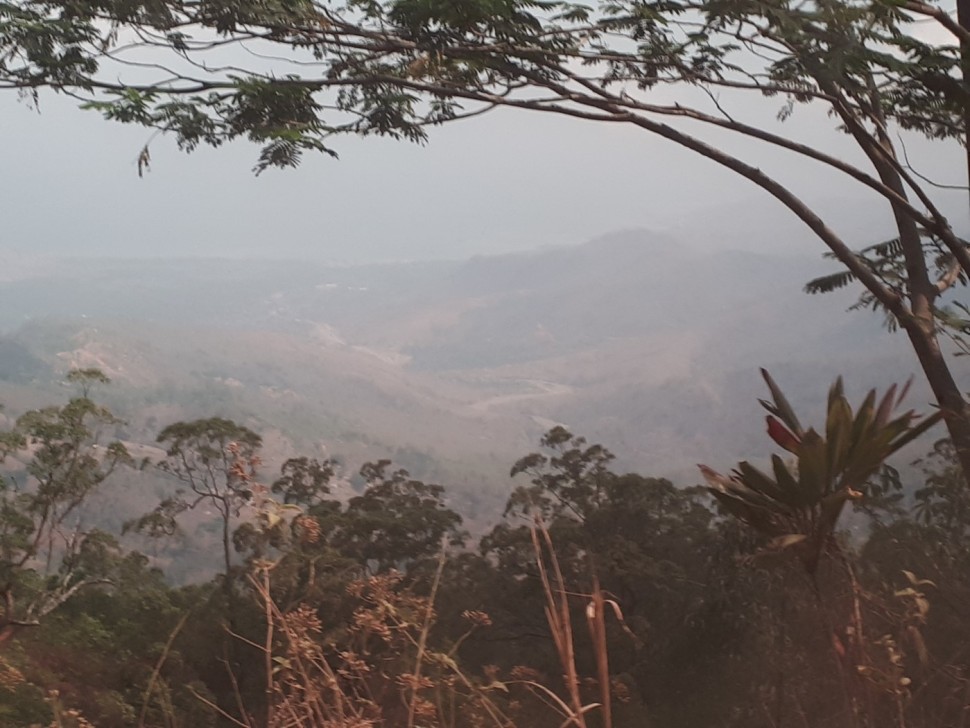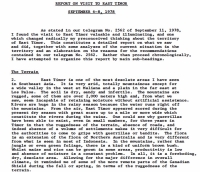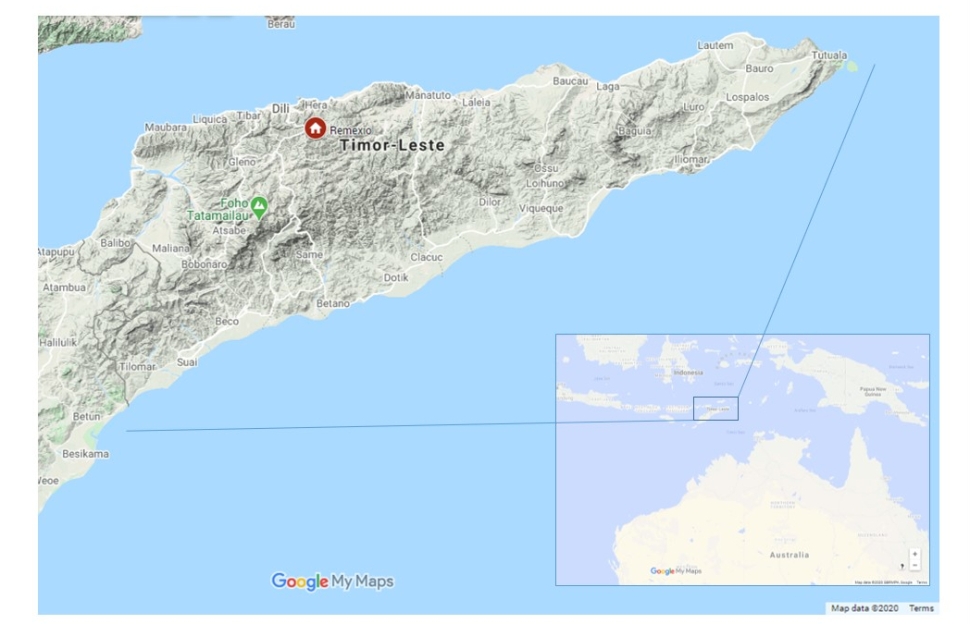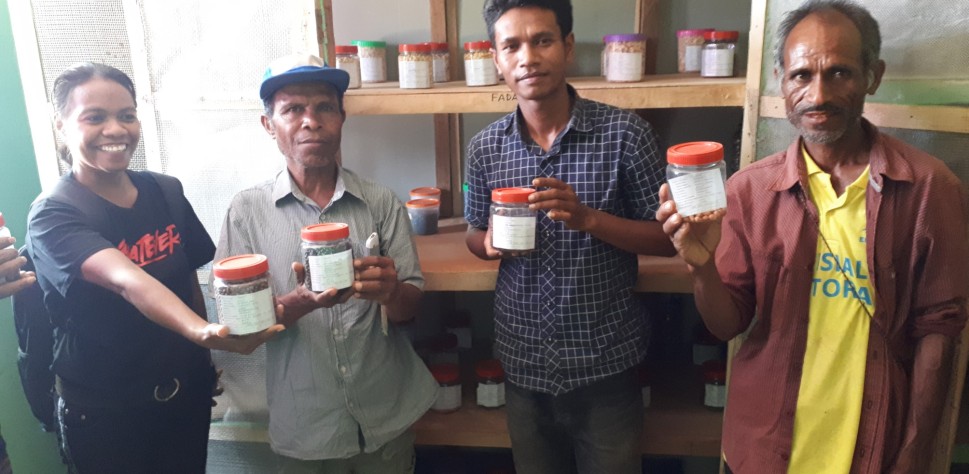In the late 1970s, Remexio sub-district in Timor-Leste lay at the heart of a devastating famine. Today, Seed Change Canada works with the Timorese NGO Raebia in a village in Remexio to promote agricultural self-reliance, biodiversity and ecological sustainability.
The landscape of Timor-Leste varies from breathtaking mountaintop and rain-blasted hillside to flat cropland and sandy beach. It is in turns green and dry, shifting colours with the season. Its people move in the sunbaked tropical space of Dili, the main city, in villages, through forest.

Yet the diverse landscape is overshadowed when people talk about the development of what is perhaps Asia’s poorest country, by outsiders’ images, not by the land itself. What Timorese call “Rai Doben,” the beloved land, becomes a blank canvass on which foreigners dream their fantasies of what Timor is.
Never was this truer than during the devastating Indonesian occupation of Timor-Leste (East Timor) that lasted from 1975-99, when foreigners piled on to explain how it was bleak, unable to support much life – still less any real prosperity. Timor became, in these fevered imaginings, a semi-wasteland.

“What branches grow out of this stony rubbish?” asked the poet T.S. Eliot. If Timor was barren, it could never be viable, never be independent. Its “dead trees” could give no shelter, its “dry stone[s] no sound of water.” Counter-images were offered, green shoots on a bleak canvass, but could not break through. As Timorese poet Abe Barreto Soares writes, even after everything is crushed, broken, made dusty, still “new buds [may] appear, flourishing the flat land.”

Images of the landscape rendered any thought of Timorese independence, in the minds of policymakers, hopeless. Thus many policymakers sided with the Indonesian army during two and a half decades of occupation – in spite of massive and systematic human rights violations and a near-genocide.
In 1978, Canadian ambassador Glen Shortliffe visited the country (I tell this story in more detail in my new book Challenge the Strong Wind: Canada and East Timor 1975-99.) Shortliffe saw famine and a huge need for development, perhaps through such Canadian NGOs as “Unitarian Services of Canada.” He blamed the landscape for the “major humanitarian problem” of famine and displacement:
East Timor is one of the most desolate areas I have seen in Southeast Asia…. The soil is dry, sandy and infertile. The mountains are rugged, some of them are over 2,000 meters high and, from what we saw, seem incapable of retaining moisture without artificial assistance…. From the air, East Timor appeared scored during the present dry season with great scars up to a mile or more wide which constitute the rivers during the rains…. In the mountains, rather than jungle or even green foliage, there is a kind of uniform brown bush. Whilst maize and rice can be grown in some areas, productivity is low and absence of moisture is a constant problem. In all, it is a foreboding, dry, desolate area. Allowing for the major difference in overall climate, it reminded me of some of the more remote parts of the Canadian Shield during the fall or spring, in terms of the ruggedness of the terrain.
Informed by this sort of account, Canada remained a fairly reliable Indonesian supporter until 1998, when General Suharto’s regime collapsed after more than three decades in power and pressure grew for a solution to the “East Timor problem.” In a subsequent referendum, the vote was massively for independence. Pro-Indonesia militia groups, acting as proxies for the Indonesian army, stepped up their violence. It took major international pressure to ensure that violence ended and the referendum results were respected.
In a context where Canada’s military contribution could only be small, the government turned to development assistance. Canadian aid peaked in 2004, at $7.3-million in bilateral aid, making Canada a major donor. But this soon faded. Canadian aid now flows only through the small Canada Fund administered by the Canadian embassy in Indonesia, and through the continuing support of USC Canada.
USC recently changed its name to SeedChange Canada, reflecting its focus on sustainable agriculture and biodiversity. It has operated in Timor-Leste since 1997. After independence, the Timorese operation dropped rebranded itself as Raebia, a group that is now one of the larger NGOs operating in Timor-Leste, with current projects in three villages and plans to expand to more.

One of these projects shows the links between current development strategies and the history of development. The suco (or village area) of Fadabloko is one of some 400 in the country, located in the Remexio sub-district in the hills behind Dili. During the Indonesian occupation, the Remexio sub-district was at the heart of the famine zone. Constancio Pinto, a survivor of the famine, recounts this “time of incredible suffering” in his memoir. “Food shortages, diseases, and killing were all around us. The Indonesian army was always hunting us…. We walked among the dead bodies.”
There was environmental change, too, resulting from the war. “The landscape in Remexio was the same – the hills and rivers, the roads I used to walk, and the church on top of a hill where I used to pray,” Pinto wrote. But “the farms that we had to abandon were occupied by other people.”
The famine and environmental changes wrought by the occupation endure. In independent Timor-Leste, political manoeuvrings at the national level mean that the major parties continue to emphasize large infrastructure projects such as airports, while the budgets for basic needs and social sectors are much lower and face further cuts.

The Raebia-supported work in Fadabloko village, in Remexio sub-district, poses a possible alternative. Its Canadian funding is now minimal. It seeks to be locally-driven and, of course, stresses agriculture. It also consciously seeks to reshape the landscape in ways that are quite different from government construction of roads, airports, and other infrastructure and even from government-backed rural development projects.
It aims to boost local cultivation methods. New techniques shore up soil against erosion using natural grasses in place of terracing supports built from stone or wood. The project aims to reduce shifting cultivation by substituting a manure-based double-pit fertilizer productions system for ash derived from burning – which also reduces smoke and thus improves air quality.

Demonstration plots are designed to be copied by individual farmers in their own outlying land. Seed banks aim at improved food sovereignty with a system in which farmers collectively save some of their seeds at harvest time, and then recoup seeds at planting time, while they are restored in a safe and cool local food bank requiring no special technology. New seeds enhance food security through increased biodiversity – if one crop is not thriving, another may do better.

These new techniques join with historical legacies. Villagers after the invasion fled to the forests, surviving by eating forest crops. The Raebia-supported project includes work categorizing and preserving these crops, which both preserves seeds and maintains traditional knowledge of important crops, both cultivated and uncultivated. A farmer in Fadabloko mentions the need to preserve seeds and of wild crops that were consumed during the occupation matters for historical reasons among others. It is in case of emergency, but also a way to honour ancestors and historical experience from the famine years.
The project stands aside from debates in Dili over different types of development. Its links to the global Seed Change network, however, make it perhaps just as as international.
David Webster
Latest posts by David Webster (see all)
- Landscapes of Development in Timor - March 31, 2020
1 Comment